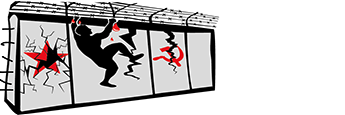Beata Bruggeman-Sekowska
Today Latvia celebrates the 30th anniversary of the restoration of its Independence.
On 4 May 1990, the parliament in Riga decided that Latvia would break away from the Soviet Union and restore its independence, restore the inter-war Latvian state, re-instituting the Constitution of Latvia of 1922.
Latvia had been part of the Soviet Union for five decades. The 1945 did not mean the end of occupation for the region of the Central and Eastern Europe but occupation by the bloody communist regime. The Baltic states: Estonia, Latvia and Lithuania had been fully incorporated into the USSR after military occupation and annexation first in 1940 and then in 1944.
The Constitutional Law on the Statehood of the Republic of Latvia adopted on 21 August, 1991 by the Supreme Council, gave a political impulse for the beginning of international recognition of the restoration of Latvia’s independence.
Iceland was the first of foreign states to recognize the restoration of Latvia’s independence on 22 August, 1991. By the end of the year 1991, 94 countries recognized the restoration. By the end of 1991 diplomatic relations were established and re-established with 45 states.
This process had been preceded by the Singing Revolution, Baltic Way.
Since 1940 the Baltic states were occupied by the Soviet Union which had agreed upon it previously with Nazi Germany on 23 August 1939 in Moscow and was entirely secret. This document is called the Hitler–Stalin Pact or the Molotov–Ribbentrop Pact (by the surnames of the signatories: the USSR Minister for Foreign Affairs Vyacheslav Molotov and the German Minister for Foreign Affairs Joachim von Ribbentrop).
Since inclusion in the USSR in 1940, the inhabitants of the Baltic states were forced to live under the dictatorship of the Communist Party where freedom of thought and speech was restricted. The occupation continued but the USSR denied the existence of the Pact and claimed that the Baltic states had voluntarily joined the Soviet Union. On 23 August 1989, the 50th anniversary of the Molotov-Ribbentrop Pact, the inhabitants of the three Baltic states demanded public acknowledgement of the Pact’s secret protocols and the renewal of the independence of the Baltic states.
On 23 August 1989, the fiftieth anniversary of the Molotov–Ribbentrop Pact, approximately two million Latvians, Lithuanians and Estonians joined hands forming a human chain from Tallinn through Riga to Vilnius. The human chain they formed spanned nearly 700 kilometers, and was a clear sign of their solidarity and wish for freedom!
In January 1991 pro-communists tried to grab the power and restore Soviet power. Latvian demonstrators managed to stop the Soviet troops from re-occupying strategic positions. These events are known as ‘’Days of the Barricades’’.
On 19 August 1991, a group of prominent Soviet officials tried to regain power in Moscow without success due to pro-democracy demonstrations in Russia.
After this coup’s failure, the Supreme Soviet of the Latvian Republic declared on 21 August 1991, that the transition period to full independence from 4 May 1990 had come to an end. Latvia was proclaimed a fully independent nation.
Source: Central and Eastren Europe Center: www.communications-Unlimited.nl
Read more and see the timeline here: https://www.saeima.lv/en/about-saeima/informative-materials-about-the-saeima/infografika-4-maijs-latvijas-republikas-neatkaribas-atjaunosanas-diena-1




Follow Us!